Throughout the NBA offseason, Season's Over will be examining which perennial bottom feeders may be rising. The opening features of The Path to Prosperity series look at Charlotte's recent futile history and how the Hornets could go from a seven-win team to a potential conference contender.
By Drew Vandemore
Guest Columnist
“With the ninth pick in the 2014 NBA draft, the Charlotte Hornets select…”
These were the words that came out of NBA commissioner Adam Silver’s mouth last Thursday. For the first time since the 2001 draft (Where ironically enough, the team selected another power forward from Indiana in Kirk Haston), the Charlotte Hornets had a draft pick.
This article is Part 2 of a two-part series that will look to the future of the Charlotte Hornets, how they fared in the 2014 NBA draft, and some ideas for the 2014 free agency period, which starts on Tuesday. Part 1 looked at how the Charlotte Bobcats failed and succeeded in recent years to reach the position they are now in today.
Analyzing the picks
Charlotte had two first round picks in the 2014 draft, receiving the No. 9 overall pick from Detroit to complete the Ben Gordon trade (In the 2012 offseason, Charlotte agreed to send SF Corey Maggette to Detroit for SG Ben Gordon and a future first round pick) and the No. 24 overall pick from Portland to complete the Gerald Wallace trade (At the 2011 trade deadline, Charlotte agreed to trade Gerald Wallace to Portland for a bunch of expiring contracts and two first round picks). The Hornets also sent their own No. 16 overall pick to Chicago to complete the Tyrus Thomas trade from 2010 – thank God the Tyrus Thomas experiment can finally be wiped from our memories – which the Bulls packaged in a deal for Doug McDermott.
Heading into the draft, Charlotte was thought to be eying shooting prowess with the No. 9 overall pick. Most mock drafts and analysts had Charlotte selecting Creighton senior and 2014 Wooden Award Winner Doug McDermott. While there were occasionally rumors of Charlotte being interested in other players such as Louisiana-Lafayette point guard Elfrid Payton or Michigan shooting guard Nik Stauskas, the Charlotte front office had apparently fallen for the 6’7 McDermott.
When it came time to pick however, the circumstances had changed for Charlotte. Noah Vonleh, an 18-year-old power forward from Indiana was widely considered a Top 5 selection going into the draft. And he was still on the board for the taking.
Charlotte fans had right to be nervous when Adam Silver walked to the stage, undoubtedly anticipating hearing McDermott’s name, one day forcing talks about how McDermott wasn’t the next Adam Morrison. However something funny happened: Charlotte made the right pick, selecting Vonleh despite him being somewhat repetitive with what they had drafted the previous year.
By Drew Vandemore
Guest Columnist
“With the ninth pick in the 2014 NBA draft, the Charlotte Hornets select…”
These were the words that came out of NBA commissioner Adam Silver’s mouth last Thursday. For the first time since the 2001 draft (Where ironically enough, the team selected another power forward from Indiana in Kirk Haston), the Charlotte Hornets had a draft pick.
This article is Part 2 of a two-part series that will look to the future of the Charlotte Hornets, how they fared in the 2014 NBA draft, and some ideas for the 2014 free agency period, which starts on Tuesday. Part 1 looked at how the Charlotte Bobcats failed and succeeded in recent years to reach the position they are now in today.
Analyzing the picks
Charlotte had two first round picks in the 2014 draft, receiving the No. 9 overall pick from Detroit to complete the Ben Gordon trade (In the 2012 offseason, Charlotte agreed to send SF Corey Maggette to Detroit for SG Ben Gordon and a future first round pick) and the No. 24 overall pick from Portland to complete the Gerald Wallace trade (At the 2011 trade deadline, Charlotte agreed to trade Gerald Wallace to Portland for a bunch of expiring contracts and two first round picks). The Hornets also sent their own No. 16 overall pick to Chicago to complete the Tyrus Thomas trade from 2010 – thank God the Tyrus Thomas experiment can finally be wiped from our memories – which the Bulls packaged in a deal for Doug McDermott.
Heading into the draft, Charlotte was thought to be eying shooting prowess with the No. 9 overall pick. Most mock drafts and analysts had Charlotte selecting Creighton senior and 2014 Wooden Award Winner Doug McDermott. While there were occasionally rumors of Charlotte being interested in other players such as Louisiana-Lafayette point guard Elfrid Payton or Michigan shooting guard Nik Stauskas, the Charlotte front office had apparently fallen for the 6’7 McDermott.
When it came time to pick however, the circumstances had changed for Charlotte. Noah Vonleh, an 18-year-old power forward from Indiana was widely considered a Top 5 selection going into the draft. And he was still on the board for the taking.
Charlotte fans had right to be nervous when Adam Silver walked to the stage, undoubtedly anticipating hearing McDermott’s name, one day forcing talks about how McDermott wasn’t the next Adam Morrison. However something funny happened: Charlotte made the right pick, selecting Vonleh despite him being somewhat repetitive with what they had drafted the previous year.
I love the Vonleh pick for two reasons. First because he oozes potential (Watch this highlight reel and tell me you can’t see the talent this young man has – just mute the video so your ears don’t begin to bleed), and second because he was the best player available at the time. GM Rich Cho has been quoted multiple times in saying that the organization was going to take a “draft for talent, trade for need” mentality to any draft that he would be a part of, and that is exactly the criteria that the team took with this pick.
Vonleh has already drawn comparisons to a young LaMarcus Aldridge, most likely because he shot 48 percent from 3-point range in his one season at Indiana and has hands that are reportedly bigger than those of 2014 NBA Finals MVP Kawhi Leonard. He possesses a solid back to the basket inside game and has the ability to stretch the floor, which makes him an ideal compliment to current starting center, 2014 All NBA 3rd team performer Al Jefferson.
The drafting of Vonleh also makes the retaining of free agent PF Josh McRoberts less of a necessity. If McRoberts decides to command something larger than say a 4 year deal worth 20 million, the Hornets can afford to let him walk while playing Cody Zeller and Vonleh at the forward spot opposite Jefferson. Noah Vonleh: A
The Hornets were able to work out a trade sending the No. 24 pick (Shabazz Napier) to Miami to acquire the No. 26 pick, the No. 55 pick, and a future second round pick. With the No. 26 selection, the Hornets were able to fulfill their wish of a shooting guard who can shoot, drafting P.J. Hariston from the Texas Legends in the Development League.
Hariston played for the Legends this past season after being dismissed due to legal trouble at UNC. He shot a solid 36 percent from the NBA 3-point line in his one season in the development league, and that should at least remain constant heading into this season.
This selection seems to be a perfect fit for a team who desperately needed three-point shooting in order to take the next step as a team and free up space for Big Al to work on the block. While I would have been happy with either Hariston or Cleanthony Early, if Hariston can prove to the Hornets that he is truly past his legal problems this pick could end up being a steal late in the first round. P.J. Hariston: B+
The Hornets made two selections in the second round, selecting Stanford PF Dwight Powell with the No. 45 pick and Semaj Christon with the No. 55 pick. Powell is part of a trade that will send him to Cleveland, and Christon has been traded for cash considerations to the Oklahoma City Thunder.
The reason I like the Powell pick actually has nothing to do with Powell himself, but rather that he was packaged with Brendan Haywood in a deal that has sent the two big men to Cleveland for Alonzo Gee and his fully non-guaranteed contract. This allows for the Hornets to get an extra $2 million below the salary cap by getting rid of the oft injured Haywood and waiving Gee, giving the Hornets a total of roughly $20 million in money to spend during the offseason this summer. Overall Draft Performance: A-
Vonleh has already drawn comparisons to a young LaMarcus Aldridge, most likely because he shot 48 percent from 3-point range in his one season at Indiana and has hands that are reportedly bigger than those of 2014 NBA Finals MVP Kawhi Leonard. He possesses a solid back to the basket inside game and has the ability to stretch the floor, which makes him an ideal compliment to current starting center, 2014 All NBA 3rd team performer Al Jefferson.
The drafting of Vonleh also makes the retaining of free agent PF Josh McRoberts less of a necessity. If McRoberts decides to command something larger than say a 4 year deal worth 20 million, the Hornets can afford to let him walk while playing Cody Zeller and Vonleh at the forward spot opposite Jefferson. Noah Vonleh: A
The Hornets were able to work out a trade sending the No. 24 pick (Shabazz Napier) to Miami to acquire the No. 26 pick, the No. 55 pick, and a future second round pick. With the No. 26 selection, the Hornets were able to fulfill their wish of a shooting guard who can shoot, drafting P.J. Hariston from the Texas Legends in the Development League.
Hariston played for the Legends this past season after being dismissed due to legal trouble at UNC. He shot a solid 36 percent from the NBA 3-point line in his one season in the development league, and that should at least remain constant heading into this season.
This selection seems to be a perfect fit for a team who desperately needed three-point shooting in order to take the next step as a team and free up space for Big Al to work on the block. While I would have been happy with either Hariston or Cleanthony Early, if Hariston can prove to the Hornets that he is truly past his legal problems this pick could end up being a steal late in the first round. P.J. Hariston: B+
The Hornets made two selections in the second round, selecting Stanford PF Dwight Powell with the No. 45 pick and Semaj Christon with the No. 55 pick. Powell is part of a trade that will send him to Cleveland, and Christon has been traded for cash considerations to the Oklahoma City Thunder.
The reason I like the Powell pick actually has nothing to do with Powell himself, but rather that he was packaged with Brendan Haywood in a deal that has sent the two big men to Cleveland for Alonzo Gee and his fully non-guaranteed contract. This allows for the Hornets to get an extra $2 million below the salary cap by getting rid of the oft injured Haywood and waiving Gee, giving the Hornets a total of roughly $20 million in money to spend during the offseason this summer. Overall Draft Performance: A-
At the end of the night, Charlotte had successfully set itself up for what is being considered by many as the most important offseason in the young history of the franchise. To guarantee any success going forward, Charlotte must continue to build on the momentum it has gained by the playoff finish from last season and a draft that has been considered a unanimous success amongst its fan base.
Here are a couple of thoughts on what the team should do with their roughly $20 million dollars in cap space:
If the Hornets are able to pull off each of these four transactions, you could see the following lineups on the floor next year:
Here are a couple of thoughts on what the team should do with their roughly $20 million dollars in cap space:
- Make Lance Stephenson the priority: While bigger name teams are busy clearing out space for names like LeBron James and Carmelo Anthony, Charlotte should be putting all of its energy on bringing in the 23-year-old shooting guard. Stephenson has developed extremely well so far in his three seasons in the league, averaging nearly 14 points per game last season while shooting 35 percent from 3-point range. Offering Stephenson, an unrestricted free agent, a 4-year deal worth $40 million dollars might be enough to get him in a Hornet uniform.
- Address the backup point guard spot: Free agent Ramon Sessions has publicly welcomed the idea of returning to Charlotte for a second stint near home (he is from Myrtle Beach). A 2-year deal worth $8 million should be fair to Ramon, while also leaving the Hornets with a little wiggle room below the cap line.
- Re-Sign Josh McRoberts: McRoberts was critical in the Bobcats offense last year, playing the role of distributor from the power forward position. Offering McRoberts a 3-year deal worth $15 million seems fair for the value he provides to the Hornets. McRoberts is a unique free agent in that his value largely depends on him being allowed to play a Boris Diaw type role that he currently enjoys in Charlotte. McRoberts is quoted as saying he wants to be back in Charlotte and the Hornets front office has been quoted saying they want to bring him back. Get this done.
- Bring back Anthony Tolliver: Tolliver was one of the few bright spots for the Bobcats last season from 3-point range, shooting an incredible 41 percent from beyond the arc. Tolliver made $975,000 last year and presumably could be brought back on a similar, non-guaranteed deal. Tolliver makes sense as a savvy veteran to keep on the roster that can also step in and play SF or PF in a pinch.
If the Hornets are able to pull off each of these four transactions, you could see the following lineups on the floor next year:
| Starters:
| Reserves:
|
That starting lineup has a very good chance at retaining its position as one of the top defensive teams in the league, as adding an above average defender like Stephenson should do nothing to hinder their efficiency on that end. Moving Henderson to the second unit seems to make a lot of sense for both sides, although I believe that Charlotte will be actively shopping his contract at the trade deadline this year.
Getting Taylor back will be an enormous boost for a unit that really struggled to score the basketball at times last year. Overall this roster is much improved while remaining slightly under the salary cap.
Looking Ahead
This lineup should be good enough to challenge Washington for the second spot in the Southeast division (Assuming Miami is able to retain their “Big 3” this offseason). If LeBron and Co. leave Miami, Charlotte would have a serious chance at winning the division and obtaining a top 4 seed in the beleaguered Eastern Conference.
'14-'15 Prediction: 50-32, 2nd in the Southeast division and a No. 5 seed in the East.
If Miami is able to retain their free agents as expected, a second place finish in the division is certainly not out of the question. Still, although this team may be drastically improved next season, Charlotte fans know better than to expect a Conference Finals appearance for a team that has struggled mightily in recent years.
Getting Taylor back will be an enormous boost for a unit that really struggled to score the basketball at times last year. Overall this roster is much improved while remaining slightly under the salary cap.
Looking Ahead
This lineup should be good enough to challenge Washington for the second spot in the Southeast division (Assuming Miami is able to retain their “Big 3” this offseason). If LeBron and Co. leave Miami, Charlotte would have a serious chance at winning the division and obtaining a top 4 seed in the beleaguered Eastern Conference.
'14-'15 Prediction: 50-32, 2nd in the Southeast division and a No. 5 seed in the East.
If Miami is able to retain their free agents as expected, a second place finish in the division is certainly not out of the question. Still, although this team may be drastically improved next season, Charlotte fans know better than to expect a Conference Finals appearance for a team that has struggled mightily in recent years.
Drew Vandemore is a senior natural resource economics major at the University of Connecticut. He lives in Charlotte, N.C. and spends his free time playing basketball and relaxing with his family. Follow Drew on Twitter @scoopdadoop and contact him at drew.vandemore@uconn.edu.
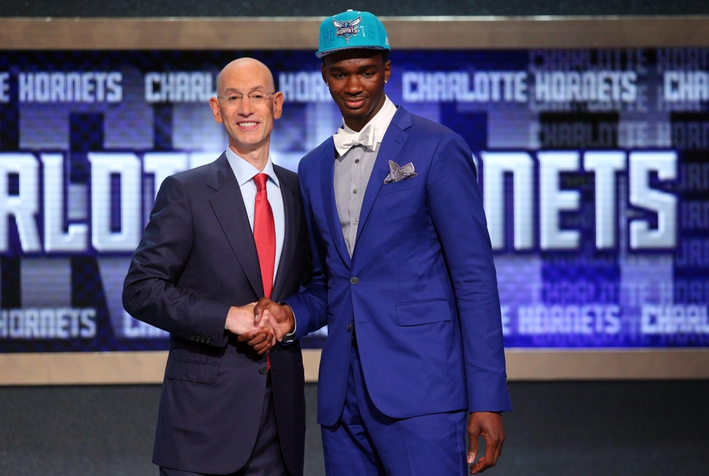
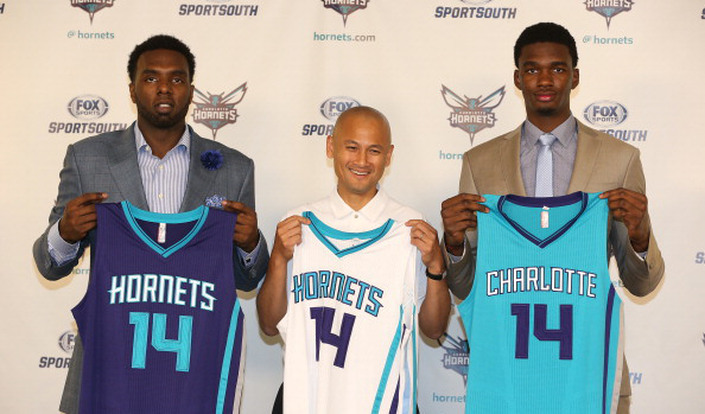
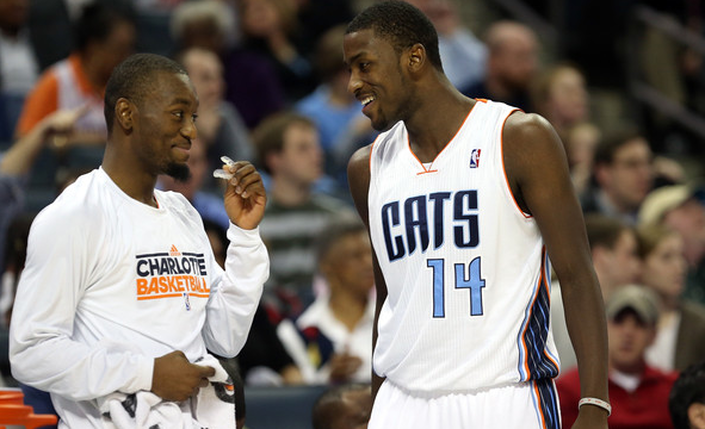
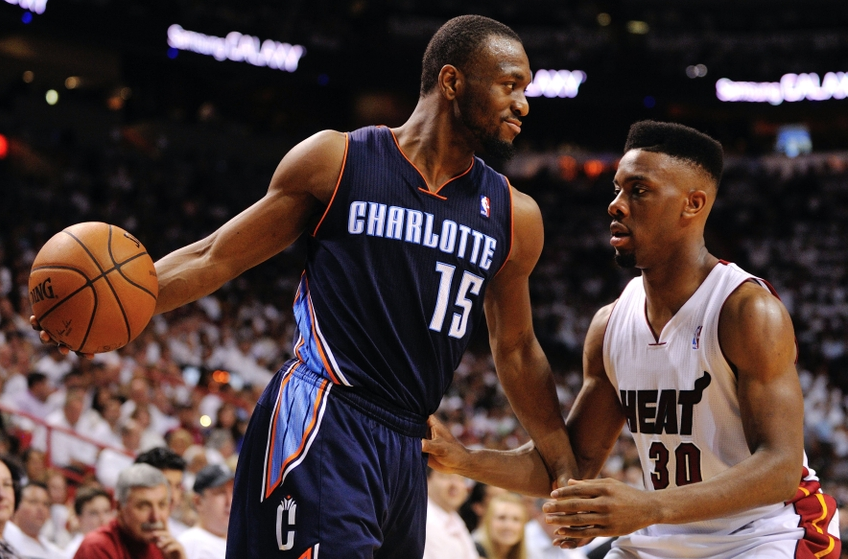
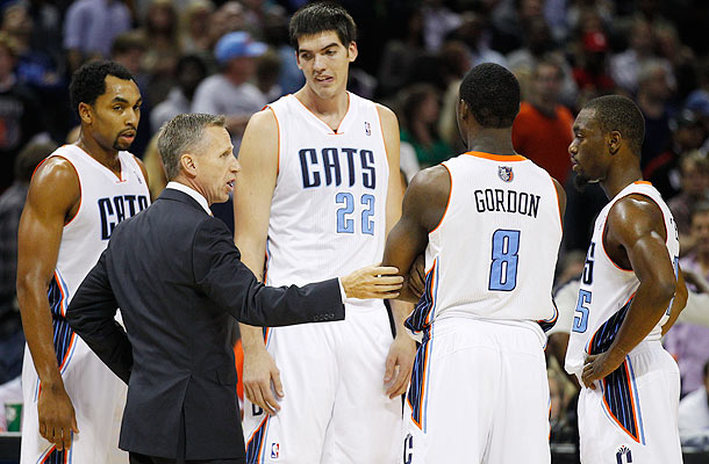

 RSS Feed
RSS Feed